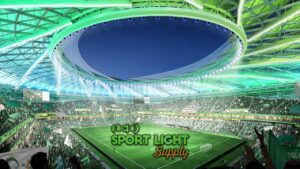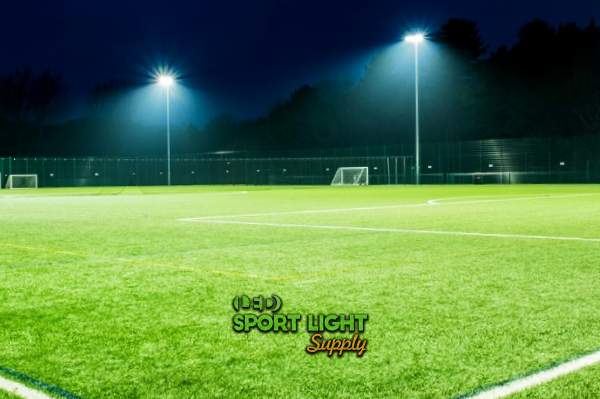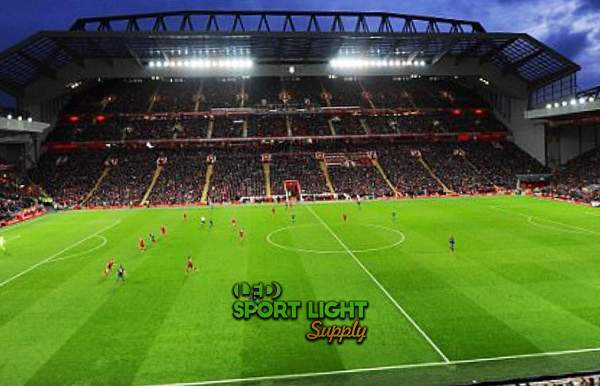
Whether it’s a community park or a professional venue, the right lighting system ensures games can be played safely, while also creating an exciting atmosphere. Among various options available, LED lighting systems have garnered attention for their efficiency and performance.
| Expense Category | Traditional Lighting (e.g., Metal Halide, High-Pressure Sodium) | LED Lighting |
|---|---|---|
| Initial Investment | $30,000 – $60,000 | $50,000 – $100,000 |
| Installation Costs | Included in Initial Investment | Included in Initial Investment |
| Annual Energy Costs | $15,000 | $7,500 |
| Annual Maintenance Costs | $2,000 (bulb replacements, repairs) | $500 |
| Lifetime of Fixtures | ~20,000 hours | ~150,000 hours |
| Total Maintenance Cost over 15 Years | $30,000 (including labor and replacements) | $7,500 |
| Total Energy Cost over 15 Years | $225,000 (15 years x $15,000/year) | $112,500 (15 years x $7,500/year) |
| Total Cost over 15 Years | $285,000 – $315,000 (Initial + Energy + Maintenance) | $170,000 – $220,000 (Initial + Energy + Maintenance) |
Table of Contents
Toggle The initial investment required for soccer field lighting can be a significant undertaking. This is particularly true when upgrading to modern lighting systems, as both the technology and installation can come at a higher cost than older, more conventional options. When it comes to choosing between traditional lighting systems and newer LED systems, the initial costs can vary considerably, and understanding these differences is important for any field operator or facility manager.
The initial investment required for soccer field lighting can be a significant undertaking. This is particularly true when upgrading to modern lighting systems, as both the technology and installation can come at a higher cost than older, more conventional options. When it comes to choosing between traditional lighting systems and newer LED systems, the initial costs can vary considerably, and understanding these differences is important for any field operator or facility manager.
Conventional lighting systems such as metal halide and high-pressure sodium lights have long been the standard for illuminating sports fields. These options tend to come with a lower upfront cost compared to their LED counterparts, often making them an attractive choice for those with limited budgets or those looking to minimize initial spending. On average, the installation cost of traditional lighting systems for a soccer field can range between $25,000 and $60,000. While this is a more affordable starting point, it’s important to recognize the drawbacks that will emerge over time due to the higher energy consumption and maintenance requirements.
When compared to traditional lighting systems, the initial cost of installing LED lights for a soccer field is higher. Typically, a standard soccer field outfitted with LED lights can cost anywhere between $50,000 and $100,000. Factors influencing this price include the size of the field, the level of brightness required for the games, and any additional features such as smart lighting controls. Though this may appear to be a steep investment at first glance, the long-term financial benefits that LEDs offer can significantly offset the initial expense.
 One of the primary advantages of LED lights is their energy efficiency, which can greatly reduce the operating costs of lighting a soccer field. This is a key consideration for facilities that need to balance the cost of operation with the quality of their lighting.
One of the primary advantages of LED lights is their energy efficiency, which can greatly reduce the operating costs of lighting a soccer field. This is a key consideration for facilities that need to balance the cost of operation with the quality of their lighting.
LED lighting systems are designed to consume much less energy than traditional systems. In fact, LEDs can be up to 50% more efficient than older lighting technologies. For example, a typical soccer field using metal halide or high-pressure sodium lighting may have an annual electricity cost of approximately $15,000. By switching to LED lighting, this cost can be cut in half, resulting in a reduction to around $7,500 annually. The energy savings quickly add up, and over the lifespan of the LED fixtures, they can save tens of thousands of dollars.
In addition to consuming less energy, LED lights also have a much longer operational life. While traditional lighting systems often require bulb replacements after about 20,000 hours of use, LED fixtures can last up to 150,000 hours or more. This extended lifespan means that soccer fields equipped with LEDs don’t need to replace bulbs nearly as often, reducing the costs associated with repairs and replacements. Additionally, LED systems require less frequent servicing, as they are less prone to wear and tear, contributing to further operational savings.
One of the ongoing expenses associated with lighting a soccer field is maintenance. Traditional lighting systems often require frequent maintenance and bulb replacements, adding to the overall costs. In contrast, LED lights provide a far more reliable and durable solution, reducing the need for such upkeep.
With older lighting systems, the need for regular bulb replacements is a significant concern. Each bulb has a finite lifespan, and depending on the field’s usage, a replacement may be needed every year or two. For a soccer field, the cost of replacing traditional bulbs can range up to $2,000 annually, factoring in both the cost of the bulbs and the labor involved in installation. Over time, these ongoing expenses can add up, especially if the lighting system is used heavily or operates for extended hours during the evening.
LED systems, however, are much less demanding in terms of maintenance. These lights are built to last longer and are far more robust, reducing the number of failures and replacements. The costs associated with replacing LED components are generally lower, typically falling below $500 annually. This substantial reduction in maintenance costs makes LED lighting a far more economical option in the long run, as facilities will not need to worry about frequent repairs or extensive labor to replace bulbs.
When evaluating the total cost of ownership for soccer field lighting, the true financial advantage of LED systems becomes clear. Though the upfront investment may be higher, the combination of lower energy consumption, reduced maintenance costs, and longer operational life results in substantial long-term savings.
The cumulative savings from energy efficiency and reduced maintenance can be substantial. Over the course of 15 to 20 years—typical for the lifespan of LED lights—a soccer field equipped with LED lights can save up to $200,000 when compared to a field with traditional lighting systems. These savings stem from lower electricity bills and the reduced need for replacements and repairs. For facilities managing tight budgets, these savings can make a major difference in operational costs over time.
In addition to the financial benefits, LED lighting provides a superior quality of illumination. The brightness and uniformity of LED lights are typically much better than traditional systems, which can result in an improved experience for both players and spectators. The more consistent lighting also reduces the risk of shadows or dark spots on the field, helping to ensure that games are played under optimal conditions.
This higher-quality lighting can also increase the field’s usability. Better lighting allows for more evening games, potentially boosting the number of events hosted at the facility. As a result, the field may generate more revenue from additional bookings or higher attendance, further improving the return on investment. The reliability of LED lighting also reduces the likelihood of disruptions during events, which could negatively impact the reputation of the facility.
Beyond the financial advantages, LED lighting systems are also better for the environment. The energy savings associated with LED lights contribute to a reduction in the overall carbon footprint of the facility. By consuming less electricity, LED systems help to lower greenhouse gas emissions, making them a more sustainable option for those looking to minimize their environmental impact. For facilities with sustainability goals or those operating under environmental regulations, this is an important consideration.
Lighting a soccer field is an investment that goes beyond simply providing illumination. It involves choosing a system that ensures safety, enhances the experience for players and fans, and delivers long-term operational savings. While traditional lighting systems may appear more affordable upfront, the higher energy consumption, frequent maintenance, and shorter lifespan make them less cost-effective in the long run.
Drop us a line to receive a free lighting design